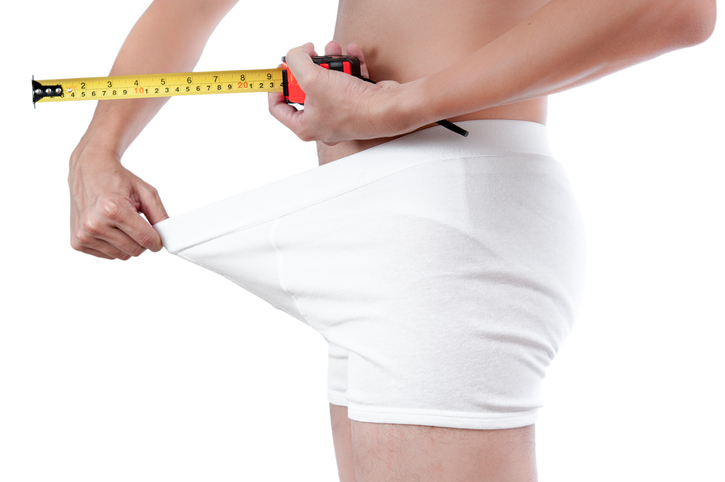
Men, have you ever had your testosterone levels checked?
Considering the media buzz about testosterone these days, many men wonder if they should.
We see news stories about testosterone replacement therapy and advertisements for testosterone boosting products that claim to make men feel young and virile again.
So it’s not surprising that men should have questions about testosterone testing. Today, let’s take a closer look.
What is testosterone?
Before we start talking about the test, let’s go over what testosterone is.
Produced by the testes (testicles), testosterone is the male sex hormone. It gives a man his male characteristics, such as facial hair and a deeper voice. It’s also important for his sex drive, erections, and sperm production.
As a man gets older, his testosterone levels start to decline in a natural process called andropause. Some men compare andropause to female menopause, but men’s testosterone declines are less dramatic than women’s declines in estrogen. Around age 40, men’s testosterone levels start to decrease about 1% each year.
How is testosterone classified?
Testosterone is categorized as “bound” and “free.”
About 98% of a man’s testosterone travels through the bloodstream “bound” to proteins called albumin and sex hormone binding globulin (SHBG). Binding to these proteins makes it easier for testosterone to travel to where it is needed in the body.
The remaining testosterone is considered “free” because it is not bound to any substance.
“Total” testosterone measures bound and free testosterone together. When doctors check testosterone levels, they usually look at total testosterone readings, as these are considered the most reliable.
Why might a doctor order a testosterone test?
When a man shows signs of low testosterone (also called hypogonadism), a doctor may suggest testing. Symptoms of low testosterone include fatigue, mood changes, depression, decreased libido, erectile dysfunction, and muscle weakness.
Testing might be ordered for men with fertility problems, as testosterone plays an important role in sperm production.
Also, men with osteoporosis often have their levels checked.
What is the test like?
The test itself is a simple blood test. It is usually performed in the morning, between 8 am and 11 am, when testosterone levels are highest. (Most testosterone is produced during sleep.)
What do the results mean?
This is difficult to answer. Every man is different and what is considered normal for one man might be high or low for another.
Certain factors can affect the results of testosterone tests. For example, levels fluctuate during the day. They can also be influenced by a man’s blood sugar, triglyceride levels, and the medications he takes.
Testing protocols can also vary from lab to lab. The types of collection tubes used and the ways the samples are stored can affect the final measurements.
Generally speaking, levels of total testosterone below 300 ng/dL are considered “low.” Your healthcare provider can help you understand what your results mean for you as an individual.
Looking at the Whole Picture
If you believe you have low testosterone, see your doctor. Symptoms of low testosterone, such as low sex drive and tiredness, can have a number of different causes. Getting a thorough checkup with the doctor is the first step in pinpointing those causes so they can be treated effectively.
Above all, don’t try to diagnose yourself with low testosterone. Some men feel awkward discussing symptoms with their doctor and try to self-treat by using over-the-counter testosterone products. This is unwise. (Click here to learn more about the risks of these products.)
Resources
International Society for Sexual Medicine
“Standardization in Diagnosing Low Testosterone”
http://www.issm.info/news/sex-health-headlines/standardization-in-diagnosing-low-testosterone/
MedlinePlus
“Testosterone”
(Updated: March 22, 2012)
http://www.nlm.nih.gov/medlineplus/ency/article/003707.htm
Renal and Urology News
Charnow, Jody A.
“Early AM Best for Measuring Testosterone in Younger Men with ED”
(February 17, 2014)
http://www.renalandurologynews.com/early-am-best-for-measuring-testosterone-in-younger-men-with-ed/article/334228/
Sexual Medicine Society of North America
“Conditions – Low Testosterone”
https://www.sexhealthmatters.org/low-testosterone/conditions-low-testosterone
“Free and Total Testosterone”
https://www.sexhealthmatters.org/did-you-know/free-and-total-testosterone
“Overview – Low Testosterone”
https://www.sexhealthmatters.org/low-testosterone/overview-low-testosterone
“Testosterone and Sleep”
https://www.sexhealthmatters.org/did-you-know/testosterone-and-sleep
WebMD
“Testosterone”
(Last updated: May 17, 2012)
You may also be interested in...
Other Popular Articles

What Is the Average Penis Size?
If you have ever wondered how your penis compares to others in terms of size, you are not alone. Many men are curious to know how their penises stack up compared to the average. Unfortunately, general curiosity can sometimes give way to full-on obsession and anxiety about penis size. This can be an unhealthy and often unnecessary fixation, especially because most men who think their penises are too small have perfectly normal-sized penises.

What Is Jelqing, and Does It Actually Work?
The term “jelqing” refers to a set of penis stretching exercises that some believe can make the penis bigger. Although the practice has gained attention and popularity in blogs and internet forums in recent years, there is no scientific evidence that it is an effective way to permanently increase the size of one’s penis. In fact, in some cases, jelqing may actually cause damage to the penis, so it is a good idea to get all the facts before setting off to try it.

What Is Sensate Focus and How Does It Work?
Sensate focus is a technique used to improve intimacy and communication between partners around sex, reduce sexual performance anxiety, and shift away from ingrained, goal-oriented sexual patterns that may not be serving a couple.

Can Sex Reduce Menstrual Cramps?
The SMSNA periodically receives and publishes ‘guest editorials.’ The current article was submitted by Mia Barnes, a freelance writer and researcher who specializes in women's health, wellness, and healthy living. She is the Founder and Editor-in-Chief of Body+Mind Magazine.
Having sex while you experience menstrual cramps is healthy and can provide significant benefits. While it might not be the first activity that comes to mind when your PMS or period cramping begins, many people enjoy sex to reduce menstrual cramps, experience increased pleasure and benefit from other advantages. Learn more about having sex while menstrual cramps are happening and how it can help your body.

How Long Does It Take the Average Man to Ejaculate?
On average, it takes a man between 5 to 7 minutes to orgasm and ejaculate during sexual intercourse.

The Effect of Regular Aerobic Exercise on Erectile Function
Erectile dysfunction (ED) is the inability to achieve or maintain an erection sufficient for satisfactory sexual activity. As men get older, their erectile functioning may naturally decline due to changes in testosterone levels, cardiovascular functioning, and the potential development of other chronic medical conditions that become more common with age.

